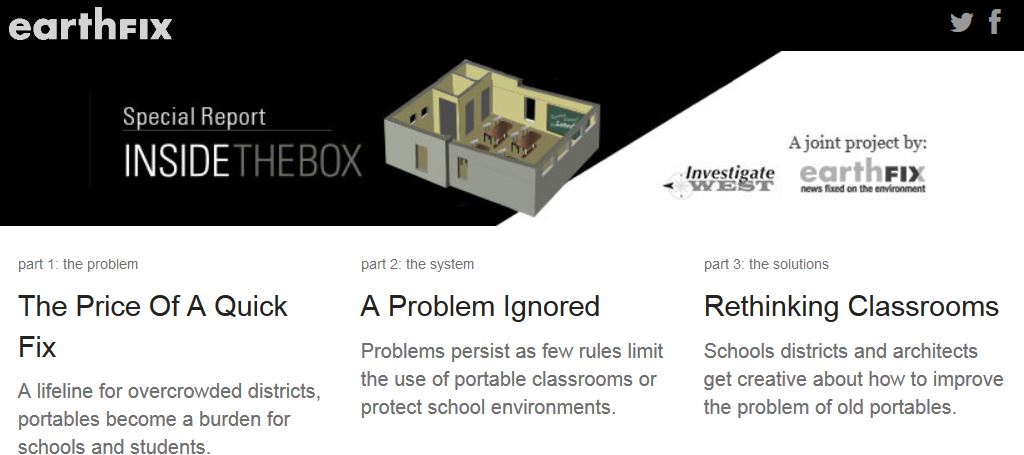Using portables instead of building new schools is actually more costly in the long run, according to a new story by EarthFix and InvestigateWest: ‘They need to go:’ The environmental and health costs of portable classrooms
Portable classrooms have popped up around the state, due to overcrowded classrooms and a lack of funds to build new schools.
The story concludes that buying a portable can cost one-third the price of building a new classroom — yet cost more in the long-term.
Those short-term fixes can lead to chronic problems. They burden schools with high energy costs and frequent maintenance needs. They expose students and teachers to mold and mildew, poor ventilation and the potential for volatile gases from cheap building materials. …
But over time, they’ve come to cost twice as much as brick-and-mortar school rooms while offering much less than traditional buildings.
Tear open a portable and often you will find cheap plywood, particle board, insulating foams and glues — the modular industry often builds to order, and school budgets are tight. Construct four walls and a roof from that, expose it to the elements for a decade longer than intended and watch your energy and maintenance costs soar.
Portables are often charged residential electricity rates because they are separate from the rest of the school. Those can be 25 to 30 percent higher than the rest of the school’s.
“There’s a reason they cost a third of what another building would cost,” Fyles says.
Students and teachers say the learning experience in portables is compromised by poor lighting, erratic temperatures and noisy heating and air conditioning. The structures often are relegated to soggy fields or parking lots, near noise and vehicle exhaust.
The team of journalists who reported this story, part of a series, say there’s also a health cost to putting students in portables instead of classrooms. They cite research on higher levels of mold, volatile chemicals and carbon dioxide levels, leading to more problems with asthma, sick days and lower student performance.
Overcrowded classrooms in kindergarten through third grade were part of the state Supreme Court’s ruling in the landmark McCleary case. Justices ordered lawmakers to reduce overcrowding in those grades in order to meet the state constitution, which says education is the paramount duty of the state.
It would cost $700 million to build the needed classrooms.
Legislation to fund that construction using lottery revenues (House Bill 2797 by Rep. Hans Dunshee) passed the House with strong support from Democrats and Republicans. The final vote was 90-7. The legislation died when the Senate didn’t allow a vote on the idea.
Washington state has some of the most overcrowded classrooms in the country, according to the WEA.
For a look at portable classrooms in your local school district, use the database EarthFix created with InvestigateWest.

